Mapping the Research Landscape for the Motorcycle Market Policies: Sustainability as a Trend—A Systematic Literature Review
Abstract
1. Introduction
- What has been the evolution over time of the number of publications in this field?
- What are the most important publication sources in this field?
- Who are the main authors in the area, and how are they connected to each other?
- What countries have published most studies in this field?
- What are the main topics addressed in this area?
2. Materials and Methods
2.1. Data Collection
- Authors
- Author affiliations
- Name of journal or conference proceedings
- Document title
- Author keywords and index keywords
- Abstract
- Times cited
2.2. Data Processing
- Removing accents: in order to prevent the loss of information, it was necessary to remove accents in the key fields of the collected documents. For example, this paper title: “Confronting congestion in urban areas: Developing Sustainable Mobility Plans for public and private organizations in Bogotá” was transformed into “Confronting congestion in urban areas: Developing Sustainable Mobility Plans for public and private organizations in Bogota”, to prevent that the word “Bogotá” from being understood by the algorithm as a different word than “Bogota”.
- Disambiguating author names based on Scopus Author ID: since some authors have similar names or their names can appear differently in various publications, the algorithm could understand that they are the same author. To prevent this, it is necessary to label each author according the unique Scopus Author ID, which distinguishes among similar names by assigning each author in Scopus a unique number and grouping all of the documents written by that author [62]. For example, authors “Lorena Cadavid” and “Laura Cadavid” are labeled as “Cadavid, L.” by Scopus, but they are actually two separate authors with different Author IDs.
- Extracting countries and institutions from the affiliation field: countries and institutions are imbibed into the full affiliation field, which includes other information not relevant for this research (such as department of the university and address). Thus, it is necessary to identify and extract the countries and institutions’ information from the full affiliation field.
- Changing all the text to lowercase: this prevents the algorithm from labeling two identical words as different because of the capital letters. For example, “Motorcycle” word is not different from “motorcycle” for the purpose of this research; changing the former to “motorcycle” solves the problem.
- Removing (and substituting where convenient) the <NA> chain: the <NA> chain is present, for example, in the title: “Transport policy evaluation based on elasticity analysis with social interactions”. However, the <NA> chain is also used to detect missing values in Python [63], the programming language used for the bibliometric algorithm. Thus, it is necessary to remove and substitute, wherever convenient, the <NA> chain from the key field of the recovered documents.
- Automatically cleaning and homogenizing author keywords and index keywords: the cleaning and homogenization process includes removing apostrophes, colon, parentheses, dashes and hyphens (such as in “Micro-mobility” and “Micro mobility”), slashes and backslashes, and other special characters in the author keywords and index keywords, in order to prevent the algorithm from labeling them as single words and from labeling identical words as different (and vice versa).
2.3. Data Analysis
- -
- h-index [64] measures productivity and impact of authors and journals (which allows one to also rank them). It is defined as the maximum value of h such that the given author/journal/country has published at least h papers that have each been cited at least h times.
- -
- The g-index is another measure of productivity and impact of authors and journals, which allows citations from higher-cited papers to be used to bolster lower-cited papers in meeting the “quality” citations threshold [65]. The g-index is the unique largest number such that the top g articles received together at least g2 citations, given a set of articles ranked in decreasing order of the number of citations that they received.
- -
- m-quotient is another measure of productivity and impact of authors and journals to facilitate comparisons between academics with different lengths of academic careers [64]. It is calculated as the division of the h-index by the number of years the academic has been active (measured as the number of years since the first published paper).
- -
- Bradford’s law [66] (or Pareto distribution) classifies the importance of a source into a research field. This law proposes to divide the information sources into three groups that cover a third of the articles published in a research field. According to it, the number of sources in each group follows a proportion of 1:n:n2. The sources in the first group are considered central for an area.
- -
- Lotka’s productivity [67] is one of the special applications of Zipf’s law [68]. It describes the frequency of publication by authors in any given field and states that as the number of articles published increases, authors producing that many publications do so less frequently. Thus, it is useful to measure the concentration of the author’s productivity.
- -
- Average Growth Rate (AGR) [69] is used to identify the trending and declining topics in the field of the main keywords. It is calculated as the average difference between the number of documents published in one year and the number of documents published in the previous year during a given period of analysis. It can take positive values (indicating that the number of publications on the topic has grown in recent years) or negative ones (indicating that the number of publications on the topic has declined in recent years).
- -
- We also used Louvain’s algorithm [70] to extract communities from the network of authors. This algorithm detects small communities at the beginning of the heuristic, and then each small community is grouped into one node before it repeats the first step.
3. Results
3.1. Evolution of the Number of Publications over Time
3.2. Top Sources
3.3. Top Authors and Interactions between Them
3.4. Leading Countries in Scientific Publications
3.5. Most Common Topics
4. Discussion
5. Conclusions
Author Contributions
Funding
Data Availability Statement
Acknowledgments
Conflicts of Interest
References
- WHO. WHO|Global Status Report on Road Safety 2013; World Health Organization: Geneva, Switzerland, 2014. [Google Scholar]
- Weiss, M.; Dekker, P.; Moro, A.; Scholz, H.; Patel, M.K. On the electrification of road transportation—A review of the environmental, economic, and social performance of electric two-wheelers. Transp. Res. Part D Transp. Environ. 2015, 41, 348–366. [Google Scholar] [CrossRef]
- Persistence Market Research. Global Market Study on Motorcycles: Standard Scooters to Remain Largest Product Type through 2026; Persistence Market Research: New York, NY, USA, 2018. [Google Scholar]
- FactMR. Motorcycle Market Forecast. Trend Analysis & Competition Tracking—Global Market Insights 2020 to 2030; FactMR: Dublin, Ireland, 2020. [Google Scholar]
- Eccarius, T.; Lu, C.-C. Powered two-wheelers for sustainable mobility: A review of consumer adoption of electric motorcycles. Int. J. Sustain. Transp. 2020, 14, 215–231. [Google Scholar] [CrossRef]
- Markets and Markets. Electric Scooter and Motorcycle Market; Markets and Markets: Pune, India, 2021. [Google Scholar]
- McD Team. Global Motorcycles Market Grew up in Double Digit in October 2020; McD Team: Luxembourg, 2020. [Google Scholar]
- Data Bridge Market Research. Electric Motorcycles Market—Global Industry Trends and Forecast to 2027. Available online: https://www.databridgemarketresearch.com/reports/global-electric-motorcycles-market (accessed on 1 March 2021).
- Chang, H.-L.; Wu, S.-C. Exploring the vehicle dependence behind mode choice: Evidence of motorcycle dependence in Taipei. Transp. Res. Part A Policy Pract. 2008, 42, 307–320. [Google Scholar] [CrossRef]
- Axsen, J.; Sovacool, B.K. The roles of users in electric, shared and automated mobility transitions. Transp. Res. Part D Transp. Environ. 2019, 71, 1–21. [Google Scholar] [CrossRef]
- Jones, L.R.; Cherry, C.R.; Vu, T.A.; Nguyen, Q.N. The effect of incentives and technology on the adoption of electric motorcycles: A stated choice experiment in Vietnam. Transp. Res. Part A Policy Pract. 2013, 57, 1–11. [Google Scholar] [CrossRef]
- Xavier, J. The Rise of Electric Two-Wheelers in China: Factors for their Success and Implications for the Future. Ph.D. Thesis, University of Califronia, Davis, CA, USA, 2007. [Google Scholar]
- Sovacool, B.K.; Abrahamse, W.; Zhang, L.; Ren, J. Pleasure or profit? Surveying the purchasing intentions of potential electric vehicle adopters in China. Transp. Res. Part A Policy Pract. 2019, 124, 69–81. [Google Scholar] [CrossRef]
- Chen, H.-S.; Tsai, B.; Hsieh, C. The effects of perceived barriers on innovation resistance of hydrogen-electric motorcycles. Sustainability 2018, 10, 1933. [Google Scholar] [CrossRef]
- Rahmanullah, E.S.; Nurjanah, S. Influence of Product Quality, Price and Supporting Infrasturcture to Perceived Value and Interest in Buying of Electric Motorcycle. MATEC Web Conf. 2018, 215, 02006. [Google Scholar] [CrossRef][Green Version]
- Huang, S.K.; Kuo, L.; Chou, K.L. The impacts of government policies on green utilization diffusion and social benefits—A case study of electric motorcycles in Taiwan. Energy Policy 2018, 119, 473–486. [Google Scholar] [CrossRef]
- Chen, H.-S.; Tsai, B.-K.; Hsieh, C.-M. Determinants of Consumers’ Purchasing Intentions for the Hydrogen-Electric Motorcycle. Sustainability 2017, 9, 1447. [Google Scholar] [CrossRef]
- Wu, J.H.; Wu, C.W.; Lee, C.T.; Lee, H.J. Green purchase intentions: An exploratory study of the Taiwanese electric motorcycle market. J. Bus. Res. 2015, 68, 829–833. [Google Scholar] [CrossRef]
- Seebauer, S. Why early adopters engage in interpersonal diffusion of technological innovations: An empirical study on electric bicycles and electric scooters. Transp. Res. Part A Policy Pract. 2015, 78, 146–160. [Google Scholar] [CrossRef]
- Chen, H.S. Applying Technology Acceptance Model to Explore the Adoption of Hydrogen-Electric Motorcycle in Taiwan. Appl. Mech. Mater. 2013, 459, 494–498. [Google Scholar] [CrossRef]
- Peraphan, J.; Hermann, K.; Markus, M. The conundrum of the motorcycle in the mix of sustainable urban transport. Transp. Res. Procedia 2017, 25, 4869–4890. [Google Scholar] [CrossRef]
- Leung, A.; Burke, M.; Perl, A.; Cui, J. The peak oil and oil vulnerability discourse in urban transport policy: A comparative discourse analysis of Hong Kong and Brisbane. Transp. Policy 2018, 65, 5–18. [Google Scholar] [CrossRef]
- International Energy Agency—IEA Tracking Transport 2020. Available online: https://www.iea.org/reports/tracking-transport-2020 (accessed on 1 July 2021).
- Bakker, S. Electric Two-Wheelers, Sustainable Mobility and the City. In Sustainable Cities: Authenticity, Ambition and Dream; IntechOpen: London, UK, 2019. [Google Scholar] [CrossRef]
- Cordellieri, P.; Sdoia, S.; Ferlazzo, F.; Sgalla, R.; Giannini, A.M. Driving attitudes, behaviours, risk perception and risk concern among young student car-drivers, motorcyclists and pedestrians in various EU countries. Transp. Res. Part F Traffic Psychol. Behav. 2019, 65, 56–67. [Google Scholar] [CrossRef]
- Silla, A.; Leden, L.; Rämä, P.; Scholliers, J.; van Noort, M.; Morris, A.; Hancox, G.; Bell, D. A headway to improve PTW rider safety within the EU through three types of ITS. Eur. Transp. Res. Rev. 2018, 10, 18. [Google Scholar] [CrossRef]
- Taefi, T.T.; Kreutzfeldt, J.; Held, T.; Fink, A. Strategies to increase the profitability of electric vehicles in urban freight transport. Green Energy Technol. 2015, 203, 367–388. [Google Scholar] [CrossRef]
- Biral, F.; Bosetti, P.; Lot, R. Experimental evaluation of a system for assisting motorcyclists to safely ride road bends. Eur. Transp. Res. Rev. 2014, 6, 411–423. [Google Scholar] [CrossRef]
- Cheng, A.S.K.; Liu, K.P.Y.; Tulliani, N. Relationship Between Driving-violation Behaviours and Risk Perception in Motorcycle Accidents. Hong Kong J. Occup. Ther. 2015, 25, 32–38. [Google Scholar] [CrossRef]
- Hidalgo-Fuentes, S.; Sospedra-Baeza, M.J. Gender and age distribution of motorcycle crashes in Spain. Int. J. Inj. Contr. Saf. Promot. 2019, 26, 108–114. [Google Scholar] [CrossRef]
- Jou, R.C.; Yeh, T.H.; Chen, R.S. Risk factors in motorcyclist fatalities in Taiwan. Traffic Inj. Prev. 2012, 13, 155–162. [Google Scholar] [CrossRef]
- Manan, M.; Varhelyi, A. Motorcycle fatalities in Malaysia. IATSS Res. 2012, 36, 30–39. [Google Scholar] [CrossRef]
- Ospina-Mateus, H.; Quintana Jiménez, L.A.; Lopez-Valdes, F.J.; Salas-Navarro, K. Bibliometric analysis in motorcycle accident research: A global overview. Scientometrics 2019, 121, 793–815. [Google Scholar] [CrossRef]
- Hsieh, P.Y.; Chang, L.F.W.; Yu, T.Y.; Wu, K.C. Evaluation of mitigation effects on air pollutants for electric scooters in Taiwan with the energy flow analysis and system dynamics approach. IOP Conf. Ser. Earth Environ. Sci. 2018, 191, 012136. [Google Scholar] [CrossRef]
- Trappey, A.J.C.; Trappey, C.; Hsiao, C.T.; Ou, J.J.R.; Li, S.J.; Chen, K.W.P. An evaluation model for low carbon island policy: The case of Taiwan’s green transportation policy. Energy Policy 2012, 45, 510–515. [Google Scholar] [CrossRef]
- Cheng, Y.-H.; Chang, Y.-H.; Lu, I.J. Urban transportation energy and carbon dioxide emission reduction strategies. Appl. Energy 2015, 157, 953–973. [Google Scholar] [CrossRef] [PubMed]
- Routledge. Mapping Urbanities: Morphologies, Flows, Possibilities; Dovey, K., Pafka, E., Mirjana, R., Eds.; Taylor & Francis: New York, NY, USA, 2018; ISBN 978-1-138-23360-7. [Google Scholar]
- Thanh Truong, T.M.; Ngoc, A.M. Parking behavior and the possible impacts on travel alternatives in motorcycle-dominated cities. Transp. Res. Procedia 2020, 48, 3469–3485. [Google Scholar] [CrossRef]
- Yang, W.-L.; Chen, L. A System Dynamics Approach To Evaluate The Impact Of Traffic Management Policy To Urban Air Quality. WIT Trans. Ecol. Environ. 2000, 42, 341–351. [Google Scholar] [CrossRef]
- Bocken, N.; Jonca, A.; Södergren, K.; Palm, J. Emergence of Carsharing Business Models and Sustainability Impacts in Swedish Cities. Sustainability 2020, 12, 1594. [Google Scholar] [CrossRef]
- Ampudia-Renuncio, M.; Guirao, B.; Molina-Sanchez, R.; Bragança, L. Electric Free-Floating Carsharing for Sustainable Cities: Characterization of Frequent Trip Profiles Using Acquired Rental Data. Sustainability 2020, 12, 1248. [Google Scholar] [CrossRef]
- Ampudia-Renuncio, M.; Guirao, B.; Molina-Sanchez, R. The impact of free-floating carsharing on sustainable cities: Analysis of first experiences in Madrid with the university campus. Sustain. Cities Soc. 2018, 43, 462–475. [Google Scholar] [CrossRef]
- Wielinski, G.; Trépanier, M.; Morency, C. Carsharing Versus Bikesharing: Comparing Mobility Behaviors. Transp. Res. Rec. 2017, 2650, 112–122. [Google Scholar] [CrossRef]
- Hernández Pulgarín, G.; Correa-Gómez, K. Incidencia de la movilidad en motocicleta en la producción de ciudad. El caso de Manizales (Colombia). Espacios 2019, 40, 29–38. [Google Scholar]
- Wigan, M. Motorcycles as a Full Mode of Transportation. Transp. Res. Rec. 2002, 1818, 39–46. [Google Scholar] [CrossRef]
- Page, M.J.; McKenzie, J.E.; Bossuyt, P.M.; Boutron, I.; Hoffmann, T.C.; Mulrow, C.D.; Shamseer, L.; Tetzlaff, J.M.; Akl, E.A.; Brennan, S.E.; et al. The PRISMA 2020 statement: An updated guideline for reporting systematic reviews. BMJ 2021, 372, n71. [Google Scholar] [CrossRef]
- Borgman, C.L. Bibliometrics and Scholarly Communication. Communic. Res. 1989, 16, 583–599. [Google Scholar] [CrossRef]
- Pritchard, A. Statistical Bibliography or Bibliometrics. J. Doc. 1969, 25, 348–349. [Google Scholar]
- Jiao, Q.G.; Onwuegbuzie, A.J. Dimensions of library anxiety and social interdependence: Implications for library services. Libr. Rev. 2002, 51, 71–78. [Google Scholar] [CrossRef]
- Emerald Group. How to Conduct Empirical Research. Available online: https://www.emeraldgrouppublishing.com/how-to/research-methods/conduct-empirical-research (accessed on 17 March 2021).
- Maditati, D.R.; Munim, Z.H.; Schramm, H.-J.; Kummer, S. A review of green supply chain management: From bibliometric analysis to a conceptual framework and future research directions. Resour. Conserv. Recycl. 2018, 139, 150–162. [Google Scholar] [CrossRef]
- Velasquez, J.D. Github Repository Jdvelasq repositories Techminer. Available online: https://github.com/jdvelasq/techminer (accessed on 20 May 2021).
- Elsevier. Why Choose Scopus—Scopus Benefits. Available online: https://www.elsevier.com/solutions/scopus/why-choose-scopus (accessed on 20 July 2021).
- Moed, H.F.; De Moya-Anegon, F.; Guerrero-Bote, V.; Lopez-Illescas, C. Are nationally oriented journals indexed in Scopus becoming more international? The effect of publication language and access modality. J. Informetr. 2020, 14, 101011. [Google Scholar] [CrossRef]
- Martín-Martín, A.; Orduna-Malea, E.; Thelwall, M.; Delgado López-Cózar, E. Google Scholar, Web of Science, and Scopus: A systematic comparison of citations in 252 subject categories. J. Informetr. 2018, 12, 1160–1177. [Google Scholar] [CrossRef]
- Sweileh, W.M. Research trends on human trafficking: A bibliometric analysis using Scopus database. Global. Health 2018, 14, 106. [Google Scholar] [CrossRef] [PubMed]
- Khudzari, J.M.; Kurian, J.; Tartakovsky, B.; Raghavan, G.S.V. Bibliometric analysis of global research trends on microbial fuel cells using Scopus database. Biochem. Eng. J. 2018, 136, 51–60. [Google Scholar] [CrossRef]
- Sánchez, A.D.; Del Río, M.D.L.C.; García, J.Á. Bibliometric analysis of publications on wine tourism in the databases Scopus and WoS. Eur. Res. Manag. Bus. Econ. 2017, 23, 8–15. [Google Scholar] [CrossRef]
- Kiani Mavi, R.; Gengatharen, D.; Kiani Mavi, N.; Hughes, R.; Campbell, A.; Yates, R. Sustainability in Construction Projects: A Systematic Literature Review. Sustainability 2021, 13, 1932. [Google Scholar] [CrossRef]
- Gonzalez-Brambila, C. Quantitative and qualitative studies of science and technology in Latin America. Scientometrics 2021, 126, 2411–2412. [Google Scholar] [CrossRef]
- Marques, I.C.P.; Franco, M. Cooperation networks in the area of health: Systematic literature review. Scientometrics 2020, 122, 1727–1750. [Google Scholar] [CrossRef]
- Scopus. What is the Scopus Author Identifier—Scopus: Access and use Support Center. Available online: https://service-elsevier-com.ezproxy.unal.edu.co/app/answers/detail/a_id/11212/supporthub/scopus/ (accessed on 3 September 2021).
- Pandas Working with Missing Data—Pandas 1.3.2 Documentation. Available online: https://pandas.pydata.org/pandas-docs/stable/user_guide/missing_data.html (accessed on 3 September 2021).
- Hirsch, J.E. An index to quantify an individual’s scientific research output. Proc. Natl. Acad. Sci. USA 2005, 102, 16569–16572. [Google Scholar] [CrossRef]
- Egghe, L. Theory and practise of the g-index. Scientometrics 2006, 69, 131–152. [Google Scholar] [CrossRef]
- Bradford, S.C. Sources of information on specific subjects 1934. J. Inf. Sci. 1985, 10, 176–180. [Google Scholar]
- Lotka, A.J. The frequency distribution of scientific productivity. J. Washingt. Acad. Sci. 1926, 16, 317–323. [Google Scholar]
- Powers, D.M.W. Applications and Explanations of Zip’s Law. In Proceedings of the New Methods in Language Processing and Computational Natural Language Learning, Sydney, Australia, 11–17 January 1998. [Google Scholar]
- Ruiz-Rosero, J.; Ramirez-Gonzalez, G.; Viveros-Delgado, J. Software survey: ScientoPy, a scientometric tool for topics trend analysis in scientific publications. Scientometrics 2019, 121, 1165–1188. [Google Scholar] [CrossRef]
- Blondel, V.D.; Guillaume, J.-L.; Lambiotte, R.; Lefebvre, E. Fast unfolding of communities in large networks. J. Stat. Mech. Theory Exp. 2008, 2008, P10008. [Google Scholar] [CrossRef]
- Ramsay, J.O. Some Statistical Approaches to Multidimensional Scaling Data. J. R. Stat. Soc. Ser. A 1982, 145, 285. [Google Scholar] [CrossRef]
- Ekundayo, T.C.; Okoh, A.I. A global bibliometric analysis of Plesiomonas-related research (1990–2017). PLoS ONE 2018, 13, e0207655. [Google Scholar] [CrossRef] [PubMed]
- Zhang, Y.; Lu, J.; Liu, F.; Liu, Q.; Porter, A.; Chen, H.; Zhang, G. Does deep learning help topic extraction? A kernel k-means clustering method with word embedding. J. Informetr. 2018, 12, 1099–1117. [Google Scholar] [CrossRef]
- Ward, J.H. Hierarchical Grouping to Optimize an Objective Function. J. Am. Stat. Assoc. 1963, 58, 236–244. [Google Scholar] [CrossRef]
- Kousoulidou, M.; Ntziachristos, L.; Mellios, G.; Samaras, Z. Road-transport emission projections to 2020 in European urban environments. Atmos. Environ. 2008, 42, 7465–7475. [Google Scholar] [CrossRef]
- Roudsari, B.S.; Sharzei, K.; Zargar, M. Sex and age distribution in transport-related injuries in Tehran. Accid. Anal. Prev. 2004, 36, 391–398. [Google Scholar] [CrossRef]
- Ong, H.C.; Mahlia, T.M.I.; Masjuki, H.H. A review on emissions and mitigation strategies for road transport in Malaysia. Renew. Sustain. Energy Rev. 2011, 15, 3516–3522. [Google Scholar] [CrossRef]
- Tiwari, G. Transport and land-use policies in Delhi. Bull. World Health Organ. 2003, 81, 444–450. [Google Scholar]
- Blaizot, S.; Papon, F.; Haddak, M.M.; Amoros, E. Injury incidence rates of cyclists compared to pedestrians, car occupants and powered two-wheeler riders, using a medical registry and mobility data, Rhône County, France. Accid. Anal. Prev. 2013, 58, 35–45. [Google Scholar] [CrossRef]
- Pandey, A.; Venkataraman, C. Estimating emissions from the Indian transport sector with on-road fleet composition and traffic volume. Atmos. Environ. 2014, 98, 123–133. [Google Scholar] [CrossRef]
- Jiang, B.; Liang, S.; Peng, Z.-R.; Cong, H.; Levy, M.; Cheng, Q.; Wang, T.; Remais, J.V. Transport and public health in China: The road to a healthy future. Lancet 2017, 390, 1781–1791. [Google Scholar] [CrossRef]
- Srinivasan, K.K.; Lakshmi Bhargavi, P.V.; Ramadurai, G.; Muthuram, V.; Srinivasan, S. Determinants of changes in mobility and travel patterns in developing countries: Case study of Chennai, India. Transp. Res. Rec. 2007, 42–52. [Google Scholar] [CrossRef]
- Harzing, A.-W. The Publish or Perish Book. 1.4.3 M-Quotient; Tarma Software Research Pty Ltd.: Melbourne, Australia, 2016; ISBN 978-0-9808485-1-9. [Google Scholar]
- Samaras, C.; Stamos, I.; Ntziachristos, L.; Mitsakis, E.; Samaras, Z.; Ayfantopoulou, G. Road transport induced GHG emissions calculation for urban transportation networks: The case of Athens and Thessaloniki in Greece. In Energy, Transportation and Global Warming. Green Energy and Technology, PartF2; Springer: Cham, Switzerland, 2016; pp. 783–794. [Google Scholar] [CrossRef]
- Severengiz, S.; Finke, S.; Schelte, N.; Wendt, N. Life Cycle Assessment on the Mobility Service E-Scooter Sharing. In Proceedings of the 2020 IEEE European Technology and Engineering Management Summit, E-TEMS, Dortmund, Germany, 5–7 March 2020. [Google Scholar]
- Eccarius, T.; Lu, C.-C. Adoption intentions for micro-mobility—Insights from electric scooter sharing in Taiwan. Transp. Res. Part D Transp. Environ. 2020, 84, 102327. [Google Scholar] [CrossRef]
- Gössling, S. Integrating e-scooters in urban transportation: Problems, policies, and the prospect of system change. Transp. Res. Part D Transp. Environ. 2020, 79, 102230. [Google Scholar] [CrossRef]
- Burchart-Korol, D.; Folęga, P. Impact of road transport means on climate change and human health in poland [Wpływ transportu drogowego na zmiany klimatu i zdrowie ludzkie w polsce]. Promet Traffic Transp. 2019, 31, 195–204. [Google Scholar] [CrossRef][Green Version]
- Tampubolon, H.; Yang, C.-L.; Chan, A.S.; Sutrisno, H.; Hua, K.-L. Optimized capsnet for traffic jam speed prediction using mobile sensor data under urban swarming transportation. Sensors 2019, 19, 5277. [Google Scholar] [CrossRef] [PubMed]
- Malik, B.Z.; Rehman, Z.U.; Khan, A.H.; Akram, W. Women’s mobility via bus rapid transit: Experiential patterns and challenges in Lahore. J. Transp. Health 2020, 17, 100834. [Google Scholar] [CrossRef]
- Mourao, P.R.; Retamiro, W. Community development banks (CDB): A bibliometric analysis of the first 2 decades of scientific production. Environ. Dev. Sustain. 2021, 23, 477–493. [Google Scholar] [CrossRef]
- Zyoud, S.H.; Zyoud, A.H. Coronavirus disease-19 in environmental fields: A bibliometric and visualization mapping analysis. Environ. Dev. Sustain. 2020, 23, 8895–8923. [Google Scholar] [CrossRef]
- Marcis, J.; Bortoluzzi, S.C.; de Lima, E.P.; da Costa, S.E.G. Sustainability performance evaluation of agricultural cooperatives’ operations: A systemic review of the literature. Environ. Dev. Sustain. 2019, 21, 1111–1126. [Google Scholar] [CrossRef]
- Orimoloye, I.R.; Ololade, O.O. Global trends assessment of environmental health degradation studies from 1990 to 2018. Environ. Dev. Sustain. 2021, 23, 3251–3264. [Google Scholar] [CrossRef]
- Garcia-Sierra, M.; Miralles-Guasch, C.; Martínez-Melo, M.; Marquet, O. Empirical analysis of travellers’ routine choice of means of transport in Barcelona, Spain. Transp. Res. Part F Traffic Psychol. Behav. 2018, 55, 365–379. [Google Scholar] [CrossRef]
- Marquet, O.; Miralles-Guasch, C. City of Motorcycles. On how objective and subjective factors are behind the rise of two-wheeled mobility in Barcelona. Transp. Policy 2016, 52, 37–45. [Google Scholar] [CrossRef]
- Afukaar, F.; Damsere-Derry, J.; Peters, K.; Starkey, P. Rural Transport Services Indicators: Using a new mixed-methods methodology to inform policy in Ghana. Transp. Res. Interdiscip. Perspect. 2019, 3, 100074. [Google Scholar] [CrossRef]
- Suatmadi, A.Y.; Creutzig, F.; Otto, I.M. On-demand motorcycle taxis improve mobility, not sustainability. Case Stud. Transp. Policy 2019, 7, 218–229. [Google Scholar] [CrossRef]
- Guillen, M.D.; Ishida, H.; Okamoto, N. Is the use of informal public transport modes in developing countries habitual? An empirical study in Davao City, Philippines. Transp. Policy 2013, 26, 31–42. [Google Scholar] [CrossRef]
- Lumbreras, J.; Guijarro, A.; López, J.M.; Rodríguez, E. Methodology to quantify the effect of policies and measures in emission reductions from road transport. WIT Trans. Built Environ. Urban Transp. XV 2009, 107, 565–574. [Google Scholar] [CrossRef]
- Han, J.; Bhandari, K.; Hayashi, Y. Assessment of policies toward an environmentally friendly urban transport system: Case study of Delhi, India. J. Urban Plan. Dev. 2010, 136, 86–93. [Google Scholar] [CrossRef]
- Agarwal, A.; Ziemke, D.; Nagel, K. Bicycle superhighway: An environmentally sustainable policy for urban transport. Transp. Res. Part A Policy Pract. 2020, 137, 519–540. [Google Scholar] [CrossRef]
- De Bortoli, A.; Christoforou, Z. Consequential LCA for territorial and multimodal transportation policies: Method and application to the free-floating e-scooter disruption in Paris. J. Clean. Prod. 2020, 273, 122898. [Google Scholar] [CrossRef]
- Mbandi, A.M.; Böhnke, J.R.; Schwela, D.; Vallack, H.; Ashmore, M.R.; Emberson, L. Estimating on-road vehicle fuel economy in Africa: A case study based on an urban transport survey in Nairobi, Kenya. Energies 2019, 12, 1177. [Google Scholar] [CrossRef]
- Santucci, M.; Pieve, M.; Pierini, M. Electric L-category Vehicles for Smart Urban Mobility. Transortation Res. Procedia 2016, 14, 3651–3660. [Google Scholar] [CrossRef]
- Hwang, J.J. Sustainable transport strategy for promoting zero-emission electric scooters in Taiwan. Renew. Sustain. Energy Rev. 2010, 14, 1390–1399. [Google Scholar] [CrossRef]
- Severengiz, S.; Finke, S.; Schelte, N.; Forrister, H. Assessing the Environmental Impact of Novel Mobility Services using Shared Electric Scooters as an Example. Procedia Manuf. 2020, 43, 80–87. [Google Scholar] [CrossRef]
- Aguiléra, A.; Grébert, J. Passenger transport mode share in cities: Exploration of actual and future trends with a worldwide survey. Int. J. Automot. Technol. Manag. 2014, 14, 203–216. [Google Scholar] [CrossRef]
- Romero, A.; Tasciotti, L.; Acosta, F. Means of transportation choice for the residents of Villavicencio, Colombia: A quantitative analysis. Transp. Res. Part F Traffic Psychol. Behav. 2017, 44, 134–144. [Google Scholar] [CrossRef]
- Airy, A.; Patil, G. Is India financing urban transport in the right direction. Int. J. Innov. Technol. Explor. Eng. 2019, 8, 142–147. [Google Scholar] [CrossRef]
- Franco, S.; Mandla, V.R. Analysis of road transport energy consumption and emissions: A case study. Int. J. Energy Sect. Manag. 2014, 8, 341–355. [Google Scholar] [CrossRef]
- Recasens-Alsina, M. Challenges for sustainable urban mobility in Barcelona [Desafíos para una movilidad sostenible: Barcelona]. Ciudad. Territ. Estud. Territ. 2020, 52, 263–276. [Google Scholar] [CrossRef]
- Ruhé, M.; Thamm, H.-P.; Fornauf, L.; Lorbacher, M.R. GIS based urban design for sustainable transport and sustainable growth for two-wheeler related mega cities like HANOI. In Proceedings of the 13th International Conference, ICCSA 2013, Ho Chi Minh City, Vietnam, 24–27 June 2013; Springer: Berlin/Heidelberg, Germany, 2013; pp. 452–465. [Google Scholar] [CrossRef]
- Basbas, S.; Oikonomou, A.; Politis, I. The role of on-street urban parking schemes for power two wheels in sustainable mobility. WIT Trans. Ecol. Environ. 2008, 117, 435–444. [Google Scholar] [CrossRef]
- Simha, P. Disruptive innovation on two wheels: Chinese urban transportation and electrification of the humble bike. Period. Polytech. Transp. Eng. 2016, 44, 222–227. [Google Scholar] [CrossRef]
- Zhu, R.; Zhang, X.; Kondor, D.; Santi, P.; Ratti, C. Understanding spatio-temporal heterogeneity of bike-sharing and scooter-sharing mobility. Comput. Environ. Urban Syst. 2020, 81, 101483. [Google Scholar] [CrossRef]
- McKenzie, G. Urban mobility in the sharing economy: A spatiotemporal comparison of shared mobility services. Comput. Environ. Urban Syst. 2020, 79, 101418. [Google Scholar] [CrossRef]
- Schnieder, M.; West, A. Evaluation of alternative battery charging schemes for one-way electric vehicle smart mobility sharing systems based on real urban trip data. In Proceedings of the 5th International Forum on Research and Technologies for Society and Industry: Innovation to Shape the Future, Florence, Italy, 9–12 September 2019; pp. 296–301. [Google Scholar]
- United Nations Transforming Our World: The 2030 Agenda for Sustainable Development. Available online: https://www.un.org/ga/search/view_doc.asp?symbol=A/RES/70/1&Lang=E (accessed on 5 June 2021).
- Jung, J.; Petkanic, P.; Nan, D.; Kim, J.H. When a Girl Awakened the World: A User and Social Message Analysis of Greta Thunberg. Sustainability 2020, 12, 2707. [Google Scholar] [CrossRef]
- International Energy Agency Transport: Improving the Sustainability of Passenger and Freight Transport. Available online: https://www.iea.org/topics/transport (accessed on 1 September 2021).
- UN ONU Propone Sistemas de Transporte Sostenibles 2016. Available online: https://news.un.org/es/story/2016/10/1367681 (accessed on 12 January 2021).
- CEPAL Conectividad de Transporte e Implementación de ODS Relacionados con el Transporte en Países sin Litoral y de Tránsito. Available online: https://www.cepal.org/es/proyectos/conectividad-transporte-implementacion-ods-relacionados-transporte-paises-sin-litoral (accessed on 5 June 2021).
- World Bank Sustainable Mobility for the 21st Century. Available online: https://www.worldbank.org/en/news/feature/2017/07/10/sustainable-mobility-for-the-21st-century (accessed on 12 June 2021).
- European Comission Sustainable Transport. What do We Want to Achieve? Available online: https://ec.europa.eu/transport/themes/sustainable_en (accessed on 9 June 2021).
- Park, C.K.; Park, J.Y.; Choi, S. Emerging clean transportation technologies and distribution of reduced greenhouse gas emissions in Southern California. J. Open Innov. Technol. Mark. Complex. 2017, 3, 8. [Google Scholar] [CrossRef]
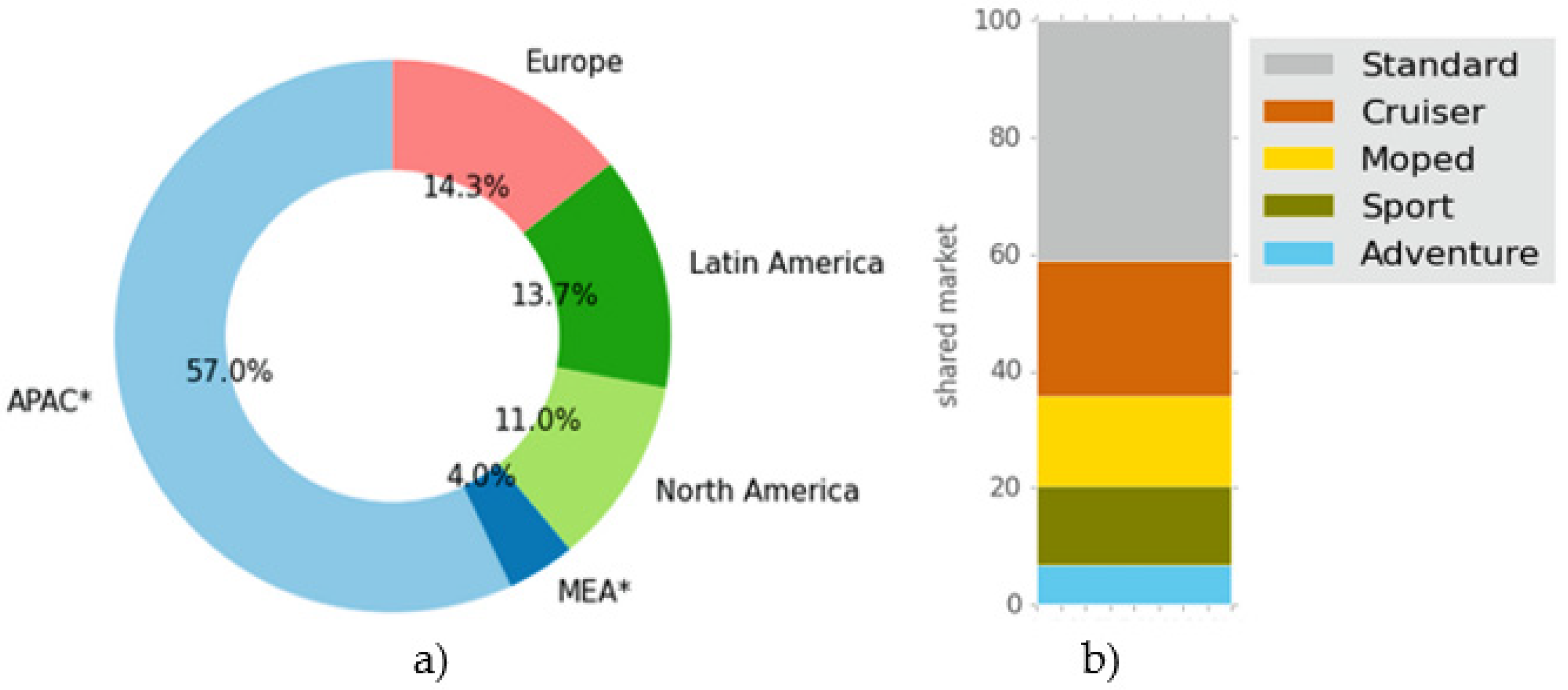
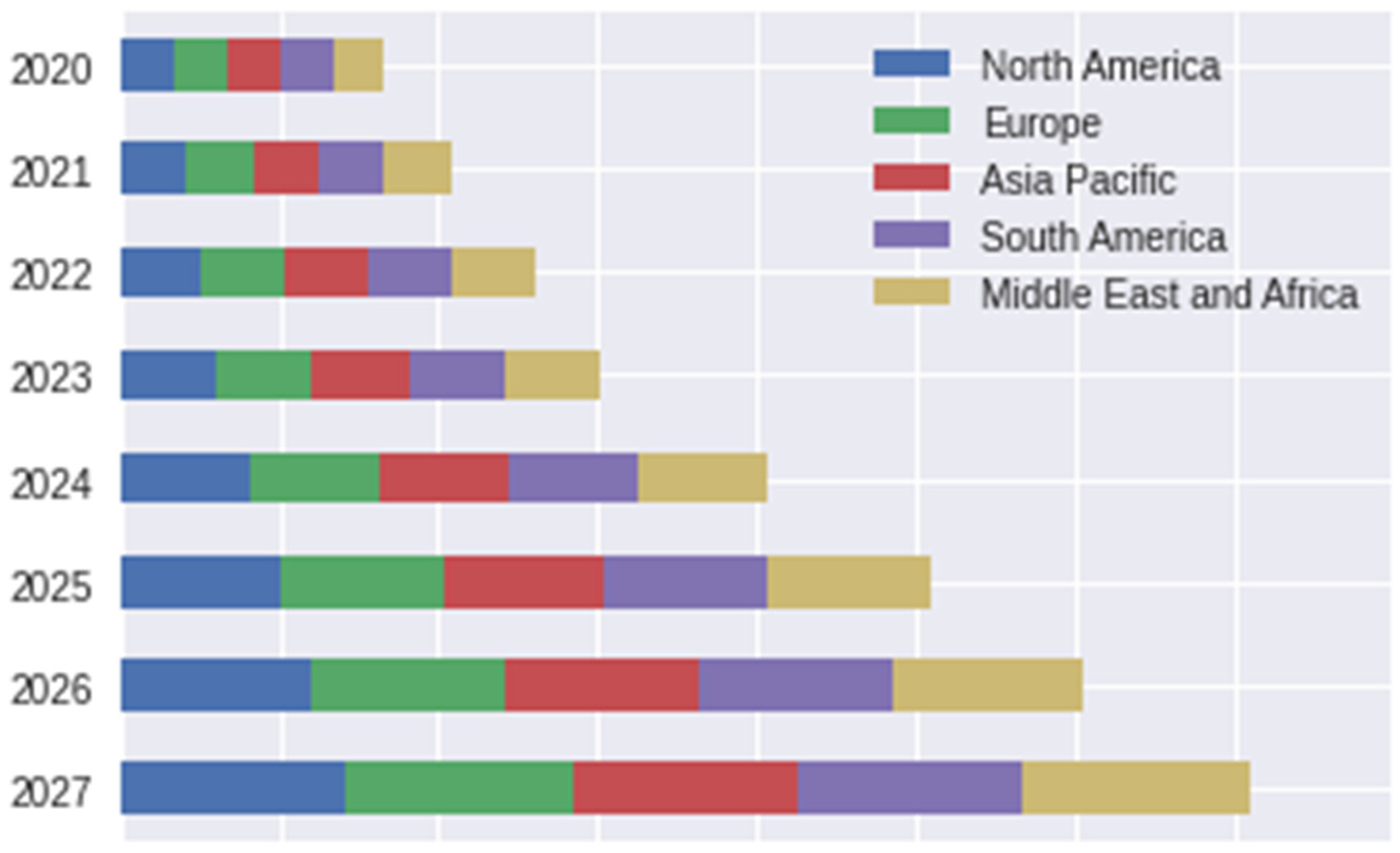

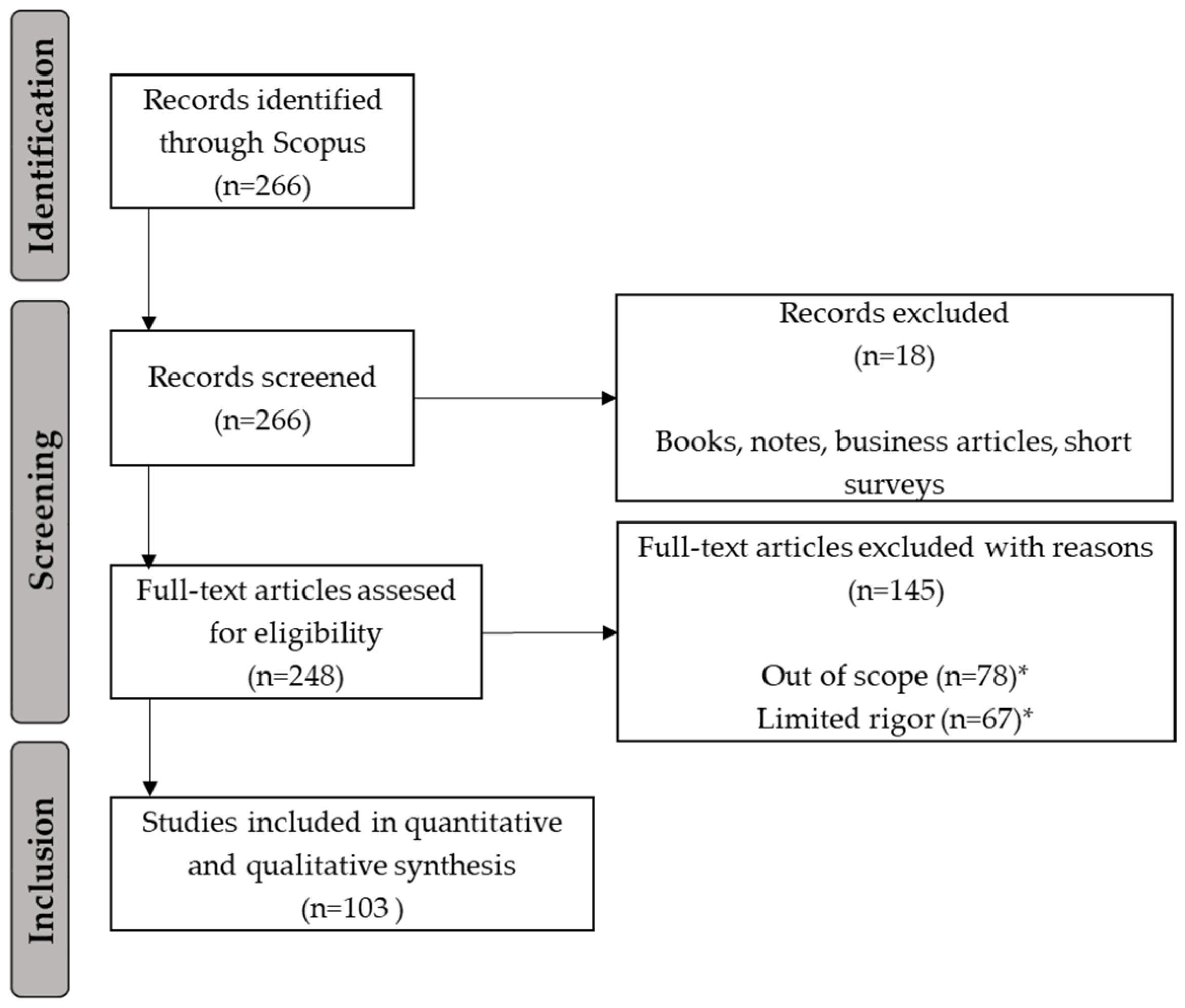
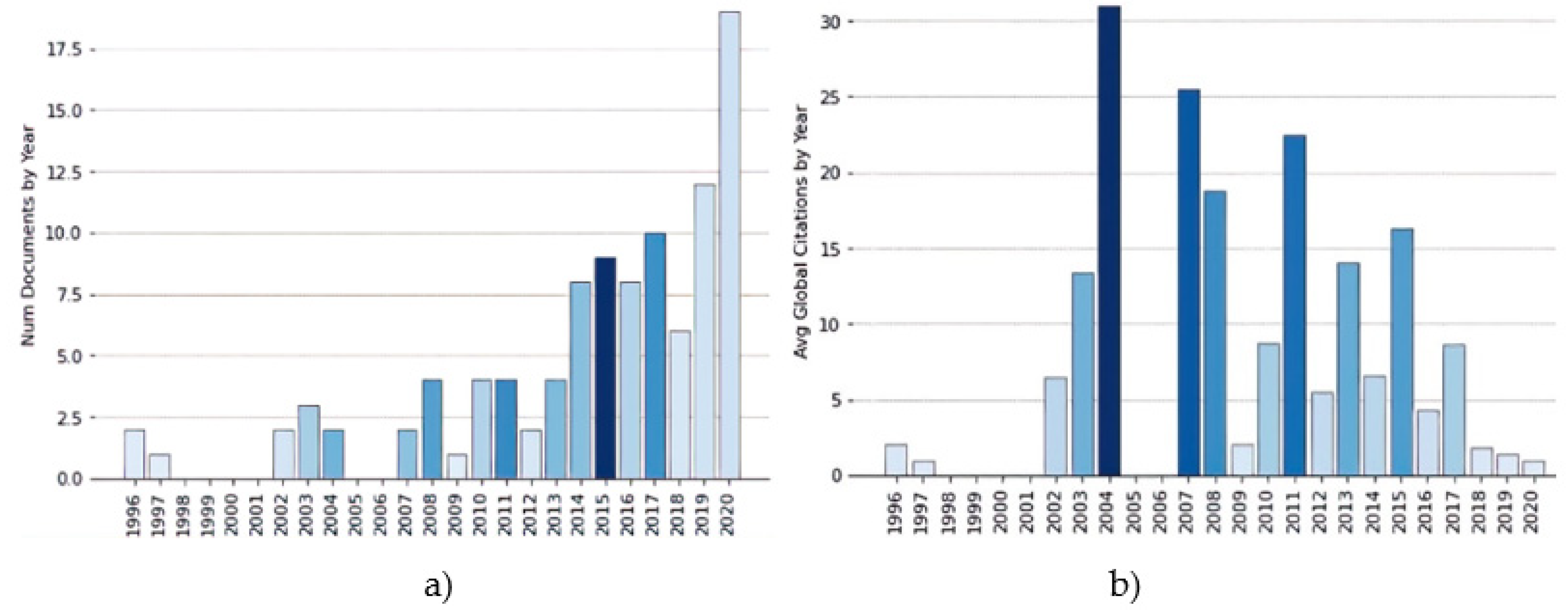
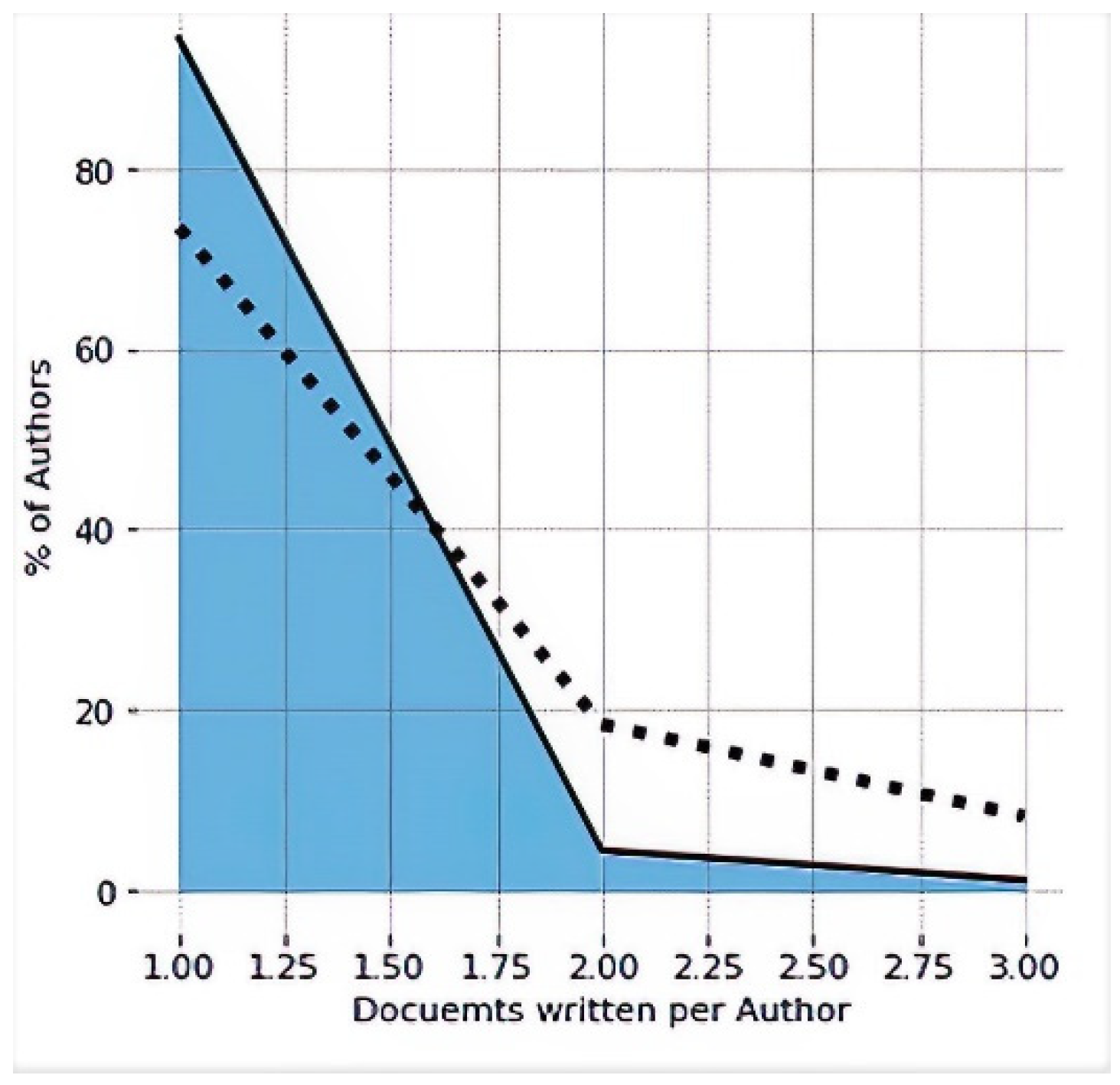
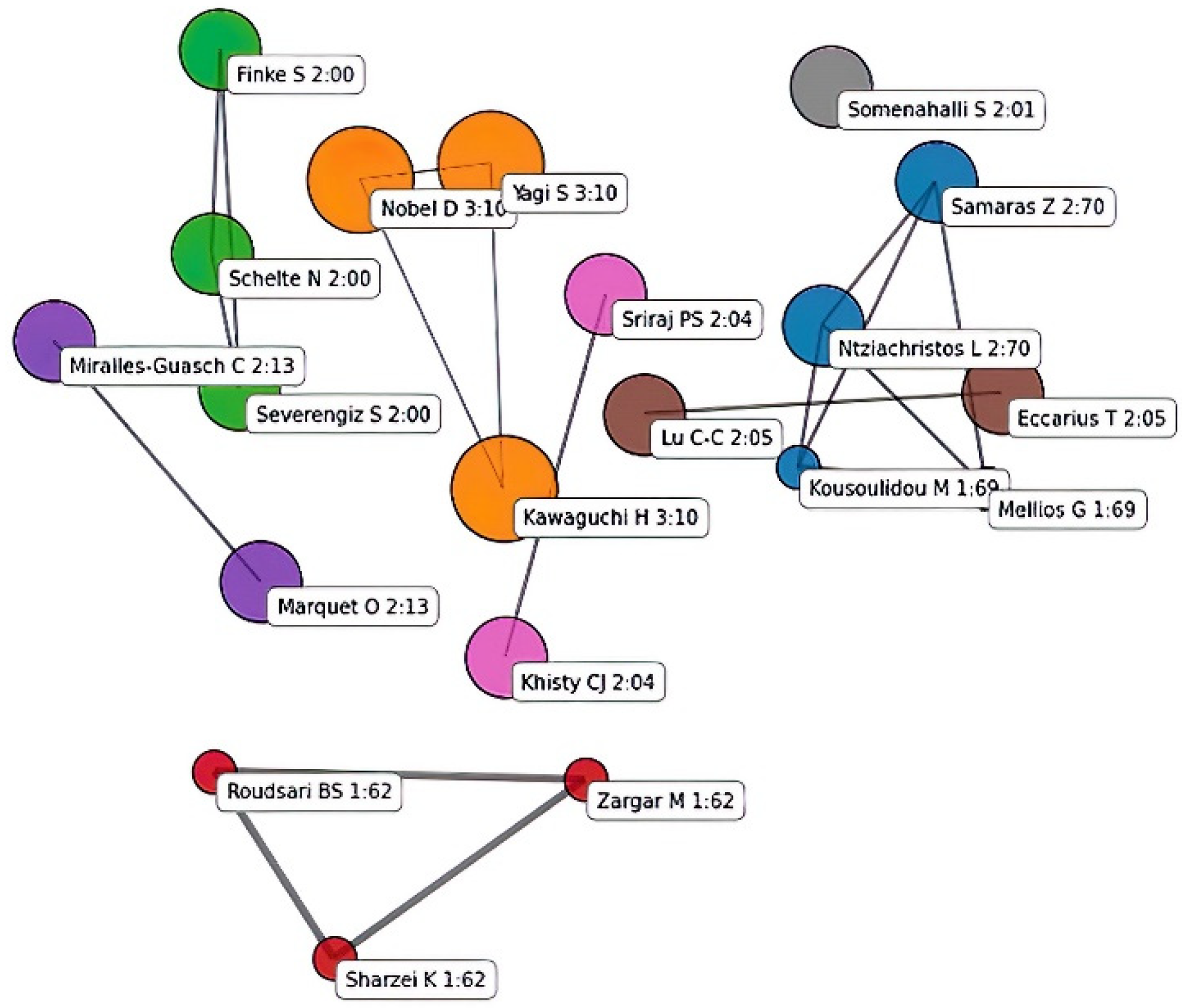
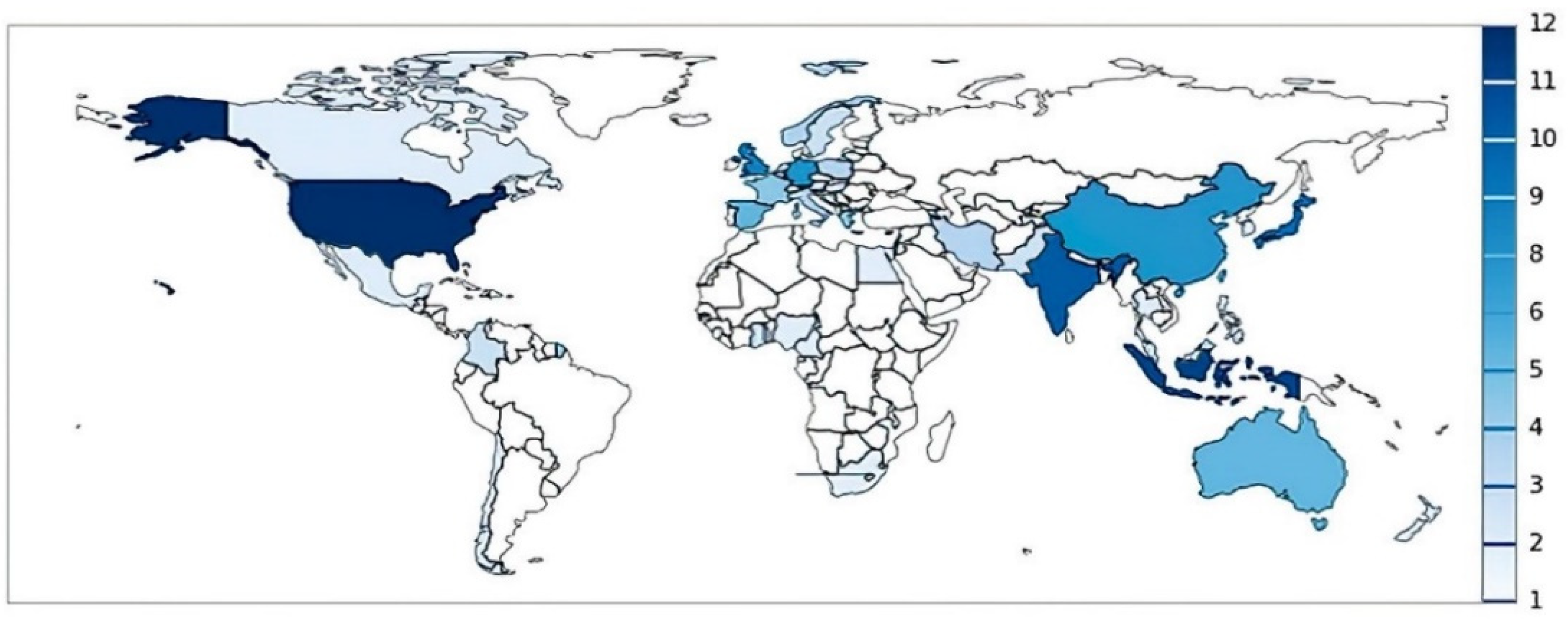
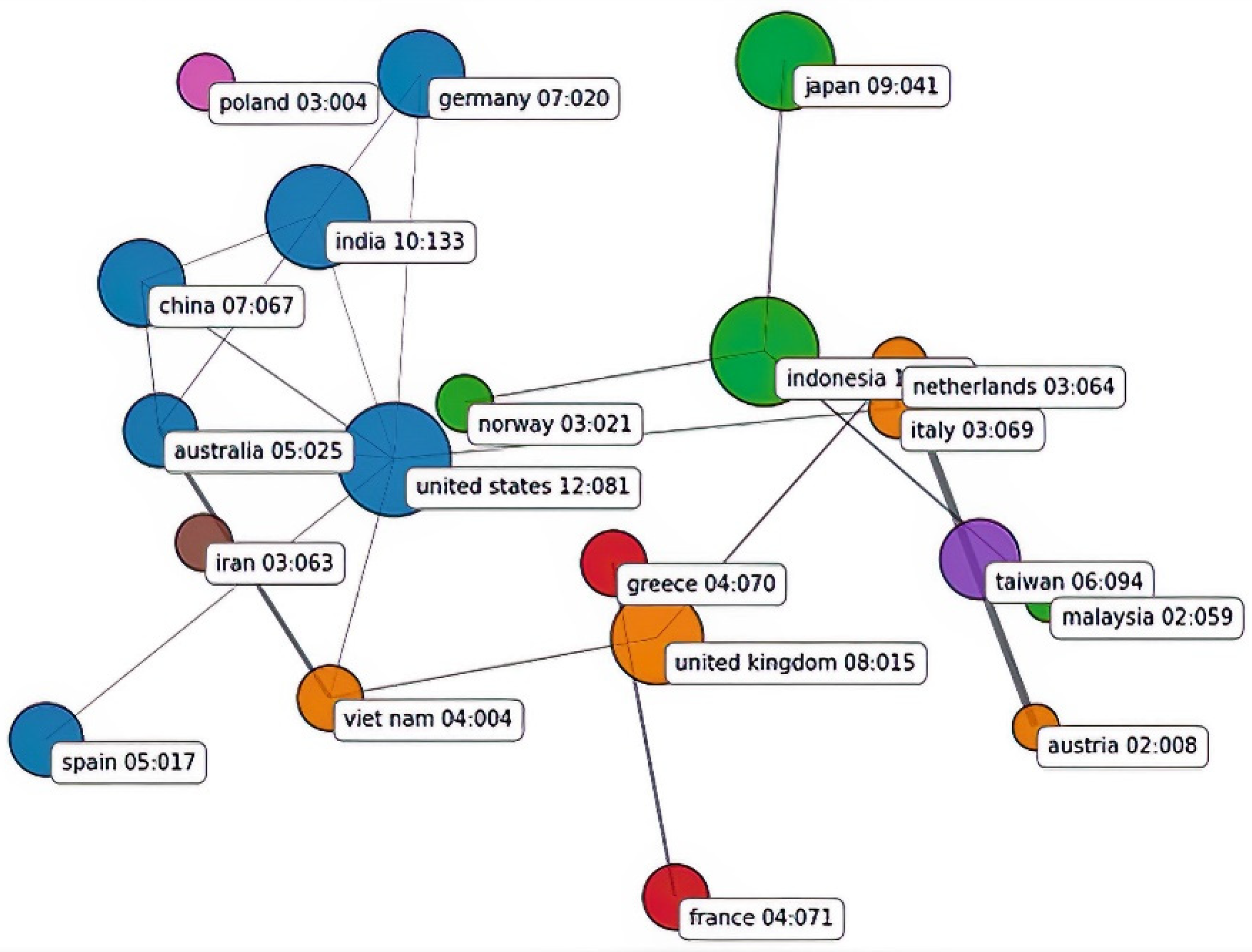
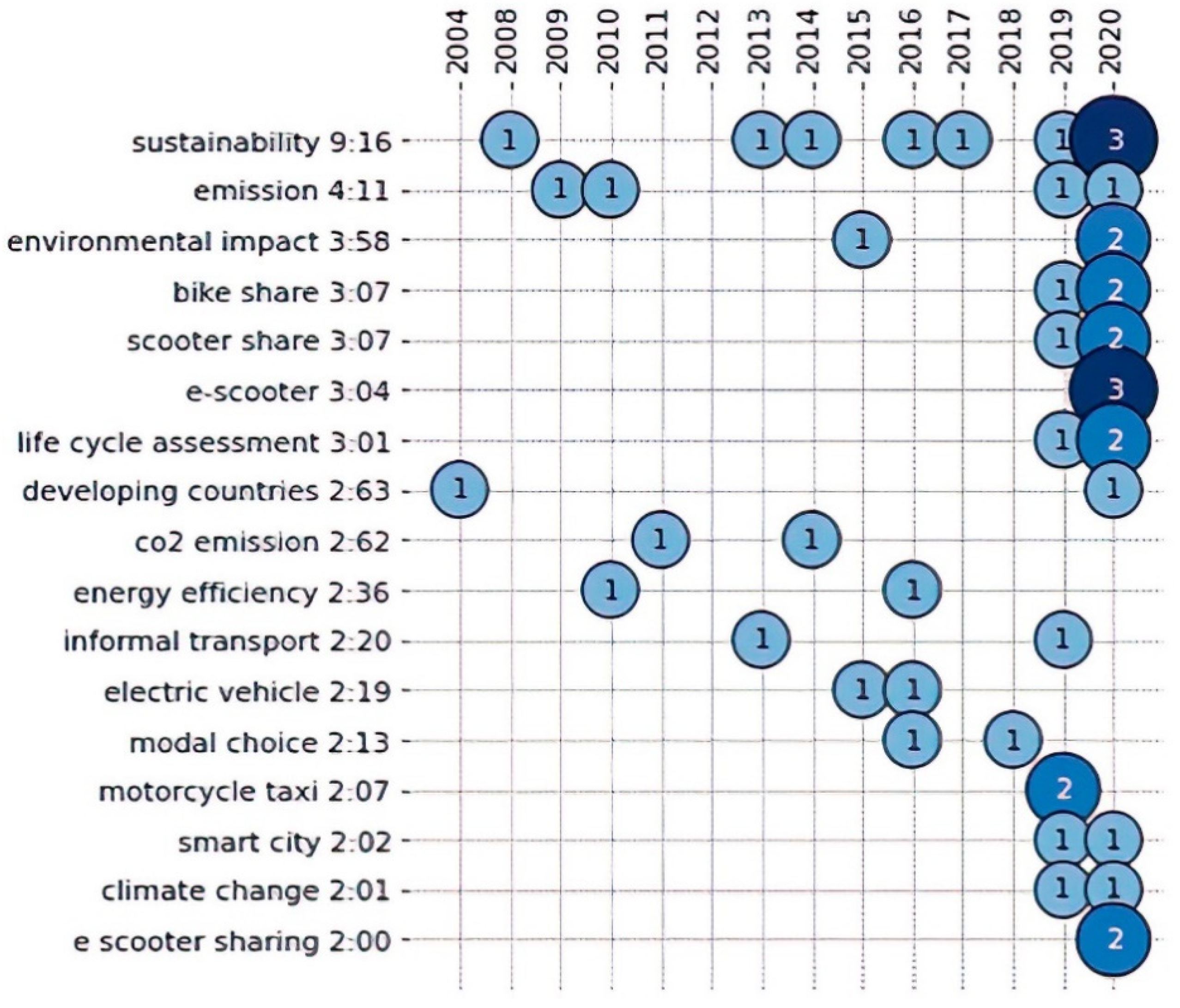
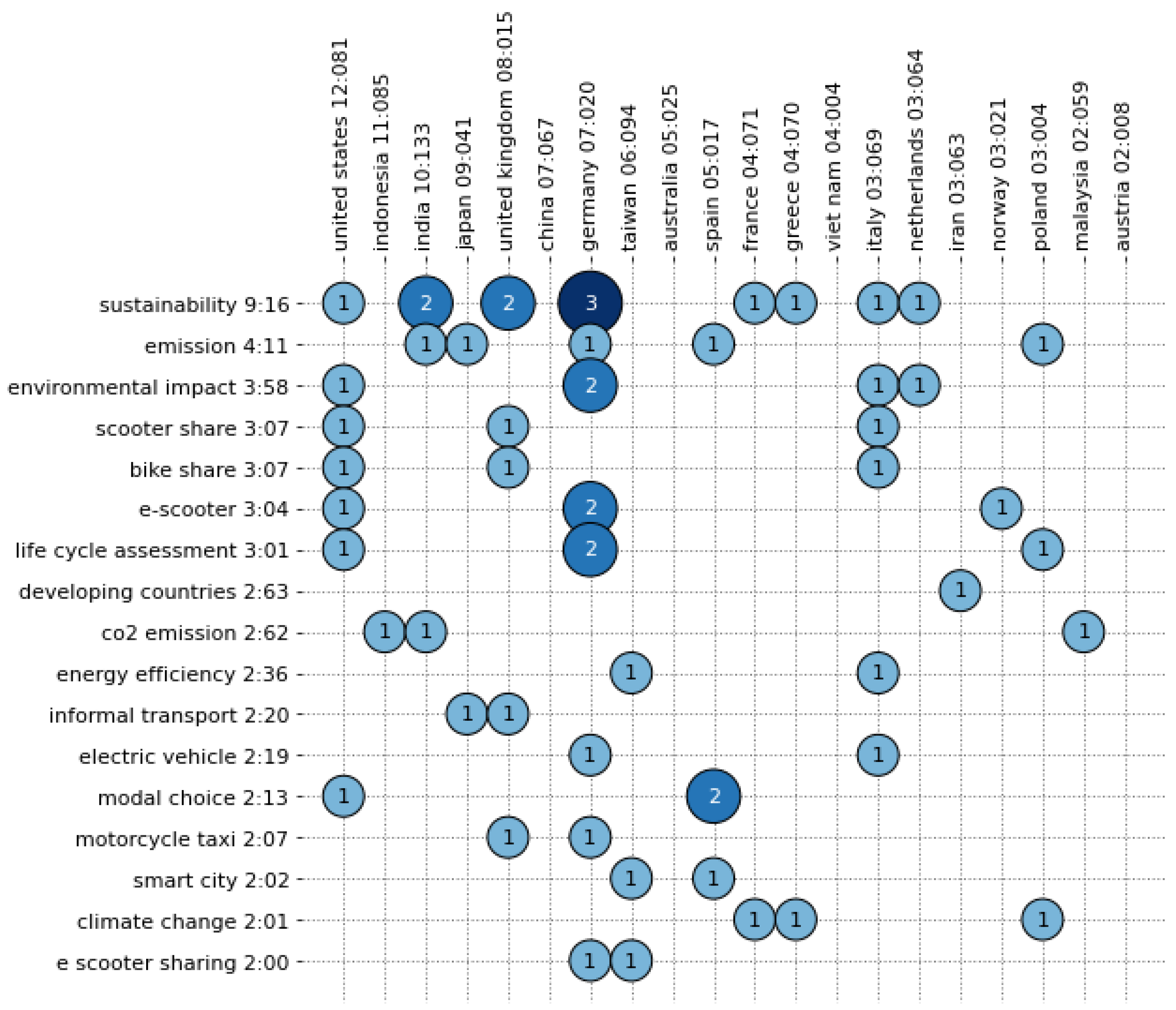
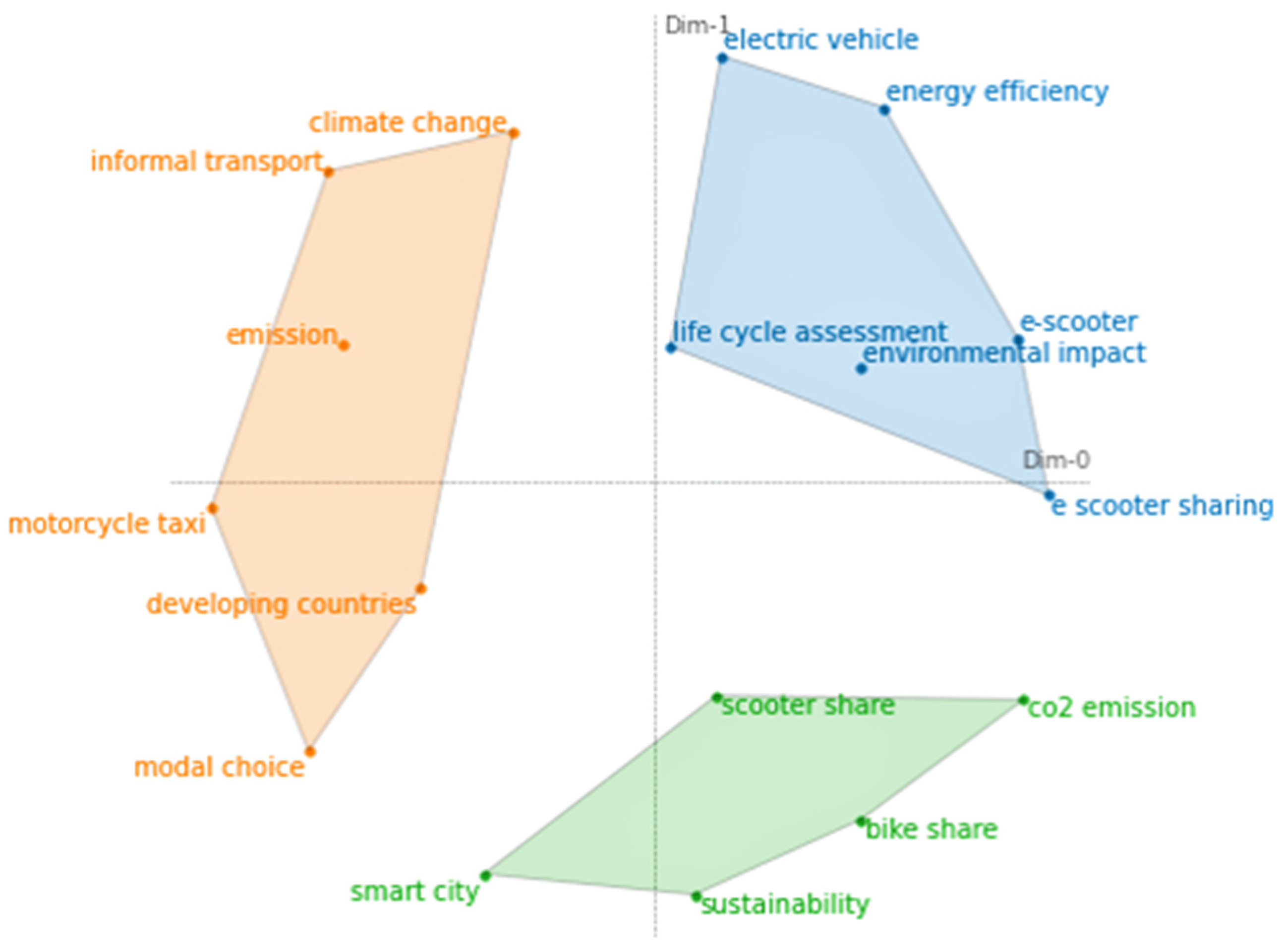

| Article | Times Cited |
|---|---|
| Kousoulidou, M., Ntziachristos, L., Mellios, G., Samaras, Z. 2008. Road-transport emission projections to 2020 in European urban environments [75] | 69 |
| Roudsari, B.S., Sharzei, K., Zargar, M. 2004. Sex and age distribution in transport-related injuries in Tehran [76] | 62 |
| Cheng, Y.-H., Chang, Y.-H., Lu, I.J. 2015. Urban transportation energy and carbon dioxide emission reduction strategies [36] | 61 |
| Ong, H.C., Mahlia, T.M.I., Masjuki, H.H. 2011. A review on emissions and mitigation strategies for road transport in Malaysia [77] | 59 |
| Weiss, M., Dekker, P., Moro, A., Scholz, H., Patel, M.K. 2015. On the electrification of road transportation—A review of the environmental, economic, and social performance of electric two-wheelers [2] | 58 |
| Tiwari, G. 2003. Transport and land-use policies in Delhi [78] | 40 |
| Blaizot, S., Papon, F., Haddak, M.M., Amoros, E. 2013. Injury incidence rates of cyclists compared to pedestrians, car occupants and powered two-wheeler riders, using a medical registry and mobility data, Rhone County, France [79] | 35 |
| Pandey, A., Venkataraman, C. 2014. Estimating emissions from the Indian transport sector with on-road fleet composition and traffic volume [80] | 34 |
| Jiang, B., Liang, S., Peng, Z.-R., Cong, H., Levy, M., Cheng, Q., Wang, T., Remais, J.V. 2017. Transport and public health in China: the road to a healthy future [81] | 33 |
| Srinivasan, K.K., Lakshmi Bhargavi, P.V., Ramadurai, G., Muthuram, V., Srinivasan, S. 2007. Determinants of changes in mobility and travel patterns in developing countries: Case study of Chennai, India [82] | 32 |
| Documents Published | Total Cites | Average Times Cited per Year | Average Times Cited per Document | H-Index | M-Quotient | G-Index | |
|---|---|---|---|---|---|---|---|
| Transportation Research Record * | 7 | 49 | 1.96 | 7.00 | 3 | 0.12 | 3 |
| Transportation Research Part D: Transport and Environment * | 3 | 62 | 10.33 | 20.67 | 2 | 0.33 | 2 |
| MATEC Web of Conferences * | 3 | 4 | 1.00 | 1.33 | 1 | 0.25 | 1 |
| Transportation Research Part A: Policy and Practice * | 3 | 1 | 1.00 | 0.33 | 1 | 1.00 | 1 |
| Atmospheric Environment * | 2 | 103 | 7.92 | 51.50 | 2 | 0.15 | 2 |
| Accident Analysis and Prevention | 2 | 97 | 5.71 | 48.50 | 2 | 0.12 | 2 |
| Renewable and Sustainable Energy Reviews * | 2 | 85 | 7.73 | 42.50 | 2 | 0.18 | 2 |
| Transport Policy * | 2 | 29 | 3.62 | 14.50 | 2 | 0.25 | 2 |
| Development Southern Africa | 2 | 20 | 1.43 | 10.00 | 1 | 0.07 | 1 |
| Transportation Research Procedia | 2 | 15 | 3.00 | 7.50 | 2 | 0.40 | 2 |
| Case Studies on Transport Policy * | 2 | 12 | 2.00 | 6.00 | 2 | 0.33 | 2 |
| Green Energy and Technology * | 2 | 10 | 1.67 | 5.00 | 1 | 0.17 | 1 |
| Computers, Environment and Urban Systems * | 2 | 7 | 7.00 | 3.50 | 1 | 1.00 | 1 |
| WIT Transactions on the Built Environment * | 2 | 5 | 0.42 | 2.50 | 2 | 0.17 | 1 |
| Transportation Research Part F: Traffic Psychology and Behaviour * | 2 | 3 | 0.75 | 1.50 | 1 | 0.25 | 1 |
| International Journal of Engineering and Advanced Technology * | 2 | 0 | 0.00 | 0.00 | 0 | 0.00 | 0 |
| Applied Energy | 2 | 61 | 10.17 | 61.00 | 1 | 0.17 | 1 |
| Bulletin of the World Health Organization | 2 | 40 | 2.22 | 40.00 | 1 | 0.06 | 1 |
| Author | Documents Published | Total Cites | Average Times Cited per Year | Average Times Cited per Document | H-Index | M-Quotient | G-Index |
|---|---|---|---|---|---|---|---|
| Ntziachristos, L. | 2 | 70 | 5.38 | 35.0 | 1 | 0.08 | 2 |
| Samaras, Z. | 2 | 70 | 5.38 | 35.0 | 1 | 0.08 | 1 |
| Kousoulidou, M. | 1 | 69 | 5.31 | 69.0 | 1 | 0.08 | 1 |
| Mellios, G. | 1 | 69 | 5.31 | 69.0 | 1 | 0.08 | 1 |
| Roudsari, B.S. | 1 | 62 | 3.65 | 62.0 | 1 | 0.06 | 1 |
| Sharzei, K. | 1 | 62 | 3.65 | 62.0 | 1 | 0.06 | 1 |
| Zargar, M. | 1 | 62 | 3.65 | 62.0 | 1 | 0.06 | … |
| Chang, Y.-H. | 1 | 61 | 10.17 | 61.0 | 1 | 0.17 | 1 |
| Cheng, Y.-H. | 1 | 61 | 10.17 | 61.0 | 1 | 0.17 | 1 |
| Lu, I.J. | 1 | 61 | 10.17 | 61.0 | 1 | 0.17 | 1 |
Publisher’s Note: MDPI stays neutral with regard to jurisdictional claims in published maps and institutional affiliations. |
© 2021 by the authors. Licensee MDPI, Basel, Switzerland. This article is an open access article distributed under the terms and conditions of the Creative Commons Attribution (CC BY) license (https://creativecommons.org/licenses/by/4.0/).
Share and Cite
Cadavid, L.; Salazar-Serna, K. Mapping the Research Landscape for the Motorcycle Market Policies: Sustainability as a Trend—A Systematic Literature Review. Sustainability 2021, 13, 10813. https://doi.org/10.3390/su131910813
Cadavid L, Salazar-Serna K. Mapping the Research Landscape for the Motorcycle Market Policies: Sustainability as a Trend—A Systematic Literature Review. Sustainability. 2021; 13(19):10813. https://doi.org/10.3390/su131910813
Chicago/Turabian StyleCadavid, Lorena, and Kathleen Salazar-Serna. 2021. "Mapping the Research Landscape for the Motorcycle Market Policies: Sustainability as a Trend—A Systematic Literature Review" Sustainability 13, no. 19: 10813. https://doi.org/10.3390/su131910813
APA StyleCadavid, L., & Salazar-Serna, K. (2021). Mapping the Research Landscape for the Motorcycle Market Policies: Sustainability as a Trend—A Systematic Literature Review. Sustainability, 13(19), 10813. https://doi.org/10.3390/su131910813







